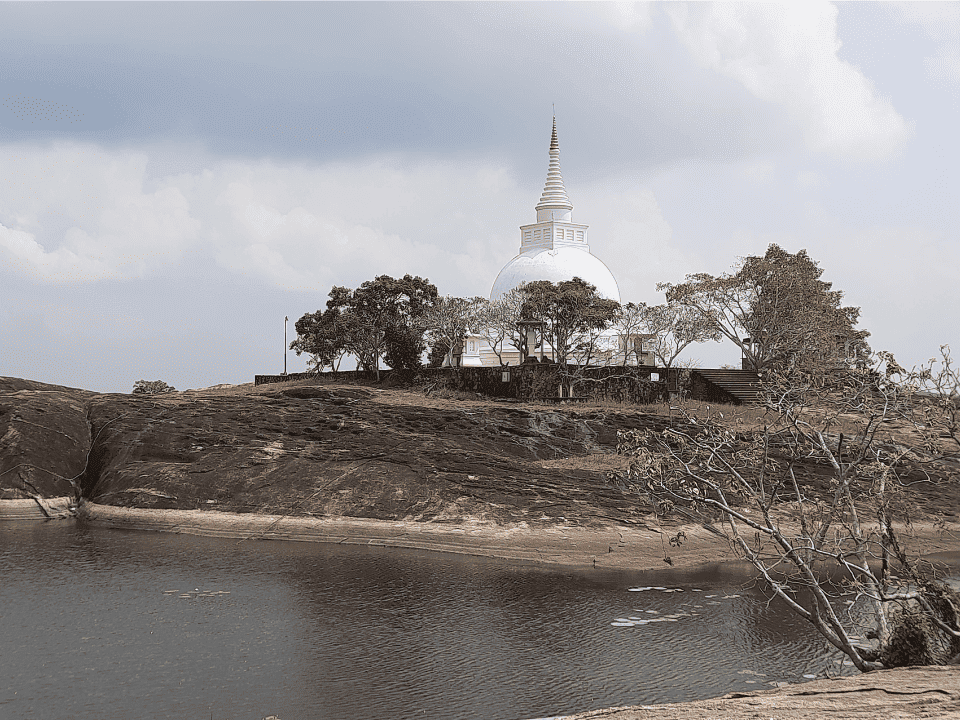Today, Tanthirimale remains as a little village in the Anuradhapura District, forty kilometers away from the main city but it has a history dating right back to the 6th Century BC, to the supposed time of Vijaya’s arrival and the beginning of the Sinhalese race itself. Apparently, the present village was close to the little settlement of Upatissagama, built by one of Vijaya’s men named Upatissa along the banks of the Malwatu River. However, while it is hard to prove this, the present-day village was called Thiwakka Bamunugama about three centuries later due to its leader, a provincial governor named Thiwakka. He had the privilege of holding a procession in honor of the first Bo sapling that came to Sri Lanka with the nun Sanghamitta, during the reign of King Devanampiyatissa.
It is believed that the sapling was planted here, on the site of the monastery and that it was a direct relative of the one currently enshrined in Anuradhapura. Also, much later the prodigal son of Dutugemunu, Saliya ran away with his lover, an outcast girl named Asokamala and they lived here for a few years. The name of the locality actually derives from the term “Tanthiri”, meaning “butterfly necklace”, after the jewelry the king gifted to his son as a peace offering.
Today, the Tantirimale area consists of a number of unfinished statues, four to be exact, of uncertain appearance and origin. One can say that a sudden invasion caused the artists to abandon their work in a hurry, and so they remain to this day as raw stone. One of the other attractions at Tanthirimale are the paintings, a selection of images that supposedly date back over four thousand years, thus being the oldest in the whole country, There is also a large stupa on top of the rock. The Bo Tree still exists, having crossed out across all three hundred acres of rock with its adventurous root system.
However, there are still good Buddha statues to be found, including a forty-five-foot reclining image cut directly out of the stone on the northern rock face and a much smaller one, closer to seven feet in meditation, or a state of Samadhi.
The Samadhi Buddha image is highly ornate in terms of the carvings surrounding it, with lion carvings on his seat and a stone roof to cover his head. Deities dance in the background of the artificial niche and a circular halo of light spreads from his head as he meditates. This halo is intensely detailed, rising out of the rock face like a proper solid object instead of a mere series of incisions done to convey the presence of the holy light.
This Samadhi image is in fact one of the finest on the island, having been cut directly into the rock as in the other images, but is much rounder and well-made by far. The grotto itself is of square shape, with a small doorframe of stone in front of it. The Buddha’s platform projects outwards from the niche in the rock, as do his perfectly shaped features. His hands are set in the gesture known as dhyana mudra, one placed atop the other as is customary in Oriental meditation. For a very long time, the monastic complex was forgotten, but it was only in the 1960s that it was finally rediscovered by Buddhist monks with the help of the Archaeological Department, and it was returned to its former glory at last. It was not just the statues that were rediscovered but a whole monastic complex was unearthed from oblivion, including stone ponds and a number of miscellaneous ruins.
The good priest, Ven. Kudakongaskada Wimalagnana Thero was killed in an explosion triggered by the LTTE during the period of civil strife in the country, in the year 1992. The temple and the village were both under heavy fire during this dark period.
Written by Vasika Udurawane for Travel Lanka Compass



0 Comment